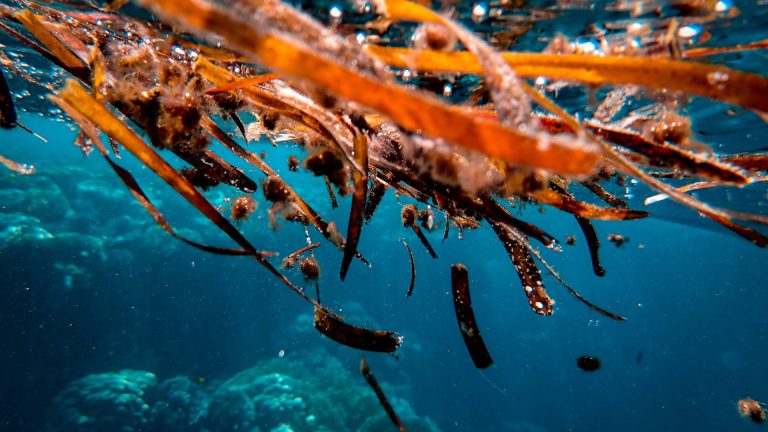
Photo by Francesco Ungaro on Unsplash
For decades, scientists have used macroalgae cover as a proxy for the health of underlying coral reefs — as it is quicker and easier to measure. The assumption since the 1970s has been that local human impacts lead to increased growth of macroalgae, and – simultaneously – more reef damage. However, this approach has been misleading and may even have hidden signs of reef stress, the researchers say.
“This paradigm has limited the ability of scientists to understand how both local and global disturbances are affecting coral reefs, especially critical today given that reefs globally are threatened by climate-driven stressors,” says lead author Dr. Sara Cannon, a postdoctoral research fellow at the Centre for Indigenous Fisheries who recently completed her PhD at UBC Geography.
The large-scale study is one of the first to evaluate the impact of human activity on a wide range of macroalgae, and provides compelling evidence that scientists need to move towards a more localized understanding of coral reef health.
Published in Global Change Biology, the study brought together researchers from around the world to look at data from over 1,200 sites in the Indian and Pacific Oceans, collected between 2004 and 2020.
After analyzing for environmental variables like storms and heat stress, and human disturbance like tourism and pollution, the researchers found that many of these individual factors could actually influence macroalgae growth – including those unrelated to human activity.
Coverage also highly depends on the species growing in the area – Sargassum is less likely to grow in water contaminated by agricultural runoff, whereas Halimeda will thrive. However in both cases, a reef will suffer. As such, the researchers conclude that using macroalgae coverage as an indication of local human disturbance can actually obscure local anthropogenic threats to reefs.
They also note that some species do better in the absence of humans, and in those cases a healthy population can signal an area that also has a healthy reef – something which has largely been unexplored in previous research.
Reefs will need to be carefully managed as the climate continues to warm, but this is best done by considering the local context of each reef community, rather than using generalized assumptions, says Dr. Cannon. “Using macroalgae percent cover as an indicator of local human disturbance may lead scientists to misidentify the reefs most in need of interventions.”
Despite the challenges identified, the study shows that there is promise in assessing reef health by looking closely at the response of each macroalgae species – an area that merits further research.
Macroalgae exhibit diverse responses to human disturbances on coral reefs was published in Global Change Biology.
Tags: algae, Centre for Indigenous Fisheries, climate change, coral, IOF postdoctoral fellows, Sara Cannon, seaweed